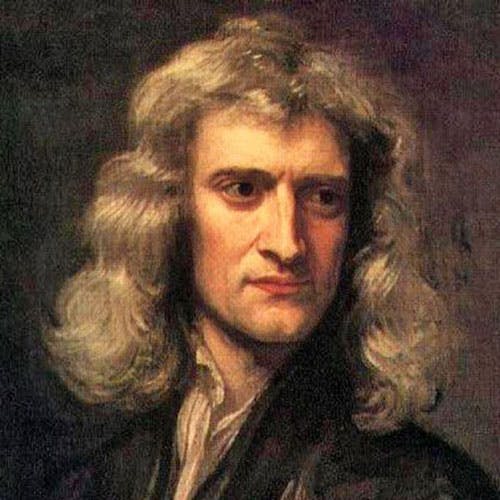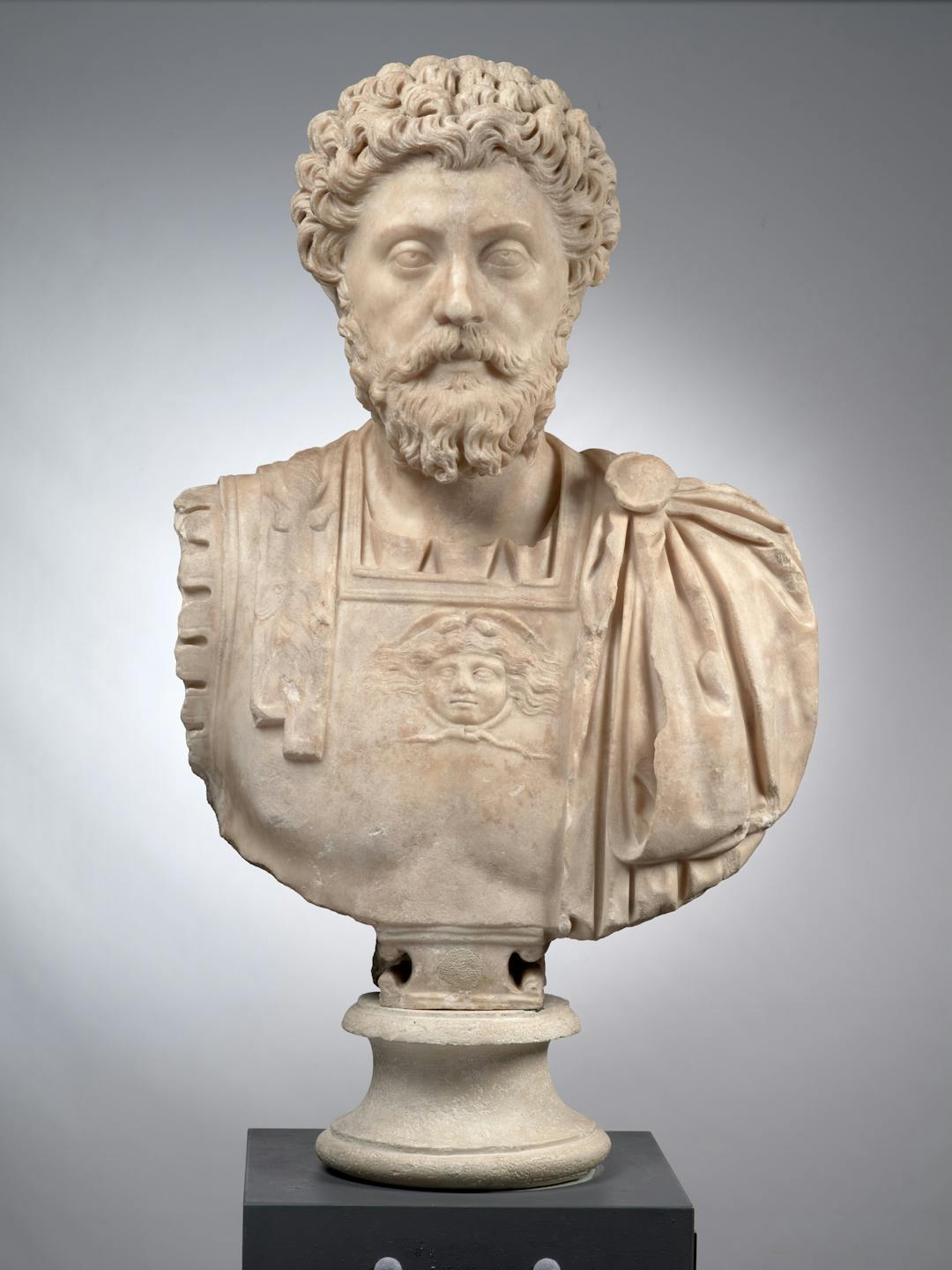Isaac Newton
The British Genius who Explained Motion and Gravity
Intro
Isaac Newton was a famous English physicist and mathematician who is most known for inventing modern calculus and the foundational theories on gravity he outlined in Philosophiæ Naturalis Principia Mathematica (Mathematical Principles of Natural Philosophy), which is widely considered to be the most influential physics book ever written. Most importantly, Newton helped shift the dominant scientific approach at the time from qualitative inquisition to quantitative analysis.
Newton has become a household name most commonly associated with the “apple myth.” As the story goes, he was inspired to explore gravity by noticing the direction a falling apple took after it hit his head. While the details of this story are contested, Newton’s foundational contributions to the fields of mathematics, astrology, physics, and optics are not. Understanding their influence and Newton’s role in transforming the nature of scientific inquiry is essential to grasping the backstory of science today.
The best and safest way of philosophising seems to be, first to enquire diligently into the properties of things, and to establish those properties by experiences [experiments] and then to proceed slowly to hypotheses for the explanation of them. For hypotheses should be employed only in explaining the properties of things, but not assumed in determining them; unless so far as they may furnish experiments.
– Isaac Newton in a letter to Gaston Pardies, a French Jesuit
On their shoulders
For millennia, great thinkers and scholars have been working to understand the quirks of the human mind. Today, we’re privileged to put their insights to work, helping organizations to reduce bias and create better outcomes.
Three laws of motion and theory of gravity- a mathematical explanation for how objects move
In 1687, Newton published Philosophiæ Naturalis Principia Mathematica, or Principia as it is more commonly called. Principia contained both his theories of motion and gravity. Newton’s three laws of motion are:
- Every object stays in its state of rest or uniform motion unless disturbed by an external force. A car, for instance, will stop when it hits a tree but the objects and people in the car will keep moving until they hit an external force like an airbag.
- Force equals mass times acceleration. This explains why a car that has a larger engine that produces more force, will be faster than one with a less forceful engine. It also explains why a car that is heavier requires more force to travel at the same speed as a lighter car.
- For every action, there is an equal and opposite reaction. For example, a rocket produces a backwards force through the expulsion of gas. This propels it upwards.
These laws were discovered as part of Newton’s broader study of gravity, which culminated in his theory of universal gravitation. According to this theory, gravity is a universal and predictable force that acts on all matter. It is also a function of both mass and distance. Newton believed that gravity looked as follows: particles of matter attract other particles with a force that is proportional to their masses, while inversely proportional to the square distance between them.
“As in Mathematics, so in Natural Philosophy, the Investigation of difficult Things by the Method of Analysis, ought ever to precede the Method of Composition. This Analysis consists in making Experiments and Observations, and in drawing general Conclusions from them by Induction, and admitting of no Objections against the Conclusions, but such as are taken from Experiments, or other certain Truths. For Hypotheses are not to be regarded in experimental Philosophy.”
— Isaac Newton in his book Opticks
Newton was the first to look at gravity and motion in this particular way. He did, however, receive some help along the way. Originally, Newton had only applied his conception of gravity and motion to phenomena he had observed on Earth. But in 1679, another English scientist
called Robert Hooke suggested that he apply his theories to planetary motion. Newton went on to use his conception of gravity and motion to understand the way planets orbit. It also allowed him to calculate the masses of planets and how the sun’s gravitational pull creates the tides on Earth.
Newton’s theoretical framework formed the basis of classical mechanics (the study of how objects move) until Albert Einstein established his theory of general relativity. Newton’s laws of motion are still used to calculate and describe the movement of many physical phenomena today. Moreover, to help explain his theories of motion and gravity, Newton created a new form of mathematics which he called “fluxions.” Today, it is called calculus— which has been invaluable for engineers, scientists and mathematicians ever since.
By combining his theories of motion and gravity with calculus, Newton offered a unified qualitative explanation for various physical phenomena. Moreover, the rigorous methods of proof and indicative inquiry that Newton employed in Principia set a new bar for scientific analysis. Newton’s substantive and methodological contributions made the scientific method more precise as well as helping us understand the physical world around us.
“Every body perseveres in its state of being at rest or of moving uniformly straight forward, except insofar as it is compelled to change its state by forces impressed.”
— Isaac Newton in his book The Principia: Mathematical Principles of Natural Philosophy
The reflecting telescope - an instrument to help us see at a distance
Newton was not the first to invent the telescope, but he was the first to build a reflecting telescope — the kind we use today. Before Newton, refracting telescopes were standard. They used glass lenses to change the direction of light (ie. refraction) in order to magnify sight. Refracting telescopes have several drawbacks, one of which is a fuzzy coloured area that would often surround the object under focus.
Instead of using glass reflecting lenses, Newton’s telescope used mirrored ones that reflected a magnified image to the eye. Because he only had to use a small mirror to bounce the image, as opposed to various glass filters, Newton could build a much smaller and more practical telescope that avoided the halo of colour distortion that affected refracting telescopes. His first model measured 6 inches in length and could magnify objects by 40x. Refraction telescopes of that era were typically less powerful and were 10 times larger.
“If I have done the public any service this way, ’tis due to nothing but industry and a patient thought.”
— Isaac Newton in a letter to English theologian, Richard Bentley
Newton developed the telescope to help him study optics, and establish a theory of light. However, “Newtonian telescopes” as they are often called, are still widely used today. Their relatively simple design has helped lower the cost of telescopes, making them more accessible to the public. Newton’s invention of the reflective telescope has helped both scientists of all sorts observe phenomena from afar. This ability has had a particularly profound impact on decision-making in the fields of astrology and zoology.
Historical Biography
Newton was born in the English town of Woolsthorpe in 1642. His family owned a farm, which his mother pulled him from grammar school at age 12 to work on. Newton disliked farming and was eventually sent back to finish his schooling. With the encouragement of his stepfather, Newton enrolled in a work-study program at University of Cambridge’s Trinity College, where he waited tables and cleaned residence rooms to cover his expenses.x3
“I have presented principles of philosophy that are not, however, philosophical but strictly mathematical—that is, those on which the study of philosophy can be based. These principles are the laws and conditions of motions and of forces, which especially relate to philosophy.
— Isaac Newton in his book The Principia: Mathematical Principles of Natural Philosophy
Like other undergraduates at the time, Newton was taught a curriculum based in Aristotelian philosophy. But Newton was drawn to the work of 17th Century thinking such as René Descartes, who thought of reality as a complex machine composed of particles in motion. His interest in modern philosophy resulted in poor academic performance, but also led Newton to make a set of notes called “Quaestiones Quaedam Philosophicae” (“Certain Philosophical Questions”). These ‘questions’ formed a new conception of nature that acted as a framework for the Scientific Revolution.
In 1665, a year later, Newton received his bachelor’s degree. This was the same year of bubonic plague, which closed the university and forced him to return home for two years. During this time, Newton helped lay the foundations of modern calculus. In 1667, Newton received a fellowship at Trinity College and began his formal career as a researcher.
“In experimental philosophy, propositions gathered from phenomena by induction should be considered either exactly or very nearly true notwithstanding any contrary hypotheses, until yet other phenomena make such propositions either more exact or liable to exceptions.”
— Isaac Newton in his book The Principia: Mathematical Principles of Natural Philosophy
In the years that followed, Newton became most known for his theories of gravity and motion, as well as his work in the field of optics. Newton’s most impactful innovation in the area of optics at the time, was his invention of the telescope. He designed and constructed a reflecting telescope in 1668 to help advance his theory of light and colour. This resulted in his appointment to the Royal Society in 1671.
In 1678, following various attacks to his theory of optics and his mother’s death, Newton suffered a nervous breakdown and withdrew from public life for 6 years. During this time of isolation, he further developed his theory of optics and began developing a theory of force. These were later included in Principia, his most famous publication which included his theories of motion and gravity. Following its publication in 1687, Newton rose to international fame.
A fun fact: Newton had a reputation for being combative with other academics. He had a long-winded clash with Robert Hooke, who thought Newton had copied some of his work. This was later disproved. Newton also fought with German mathematician, Gottfried Leibniz, over who was the first to discover calculus first. While an investigation at the time accredited Newton, it was later determined that both mathematicians made equally significant contributions on their own.
“The qualities of bodies, which admit neither intension nor remission of degrees, and which are found to belong to fill bodies within the reach of our experiments, are to be esteemed the universal qualities of all bodies whatsoever.”
— Isaac Newton in his book The Principia: Mathematical Principles of Natural Philosophy
Published Works
This lecture, given by Professor Raymond Flood, provides an overview of Newton’s life, as well as a more in-depth look at his laws of motion and their applications today.
The Truth About Isaac Newton’s Productive Plague
A more thorough, yet critical look at Newton’s productive isolation during the plague, in which he claims to have helped invent modern calculus.
Newton’s Universal Law of Gravitation
A newspaper article that intelligibly explains Newton’s theory of gravity and its contributions to modern science.
About the Author
The Decision Lab
The Decision Lab is a Canadian think-tank dedicated to democratizing behavioral science through research and analysis. We apply behavioral science to create social good in the public and private sectors.





